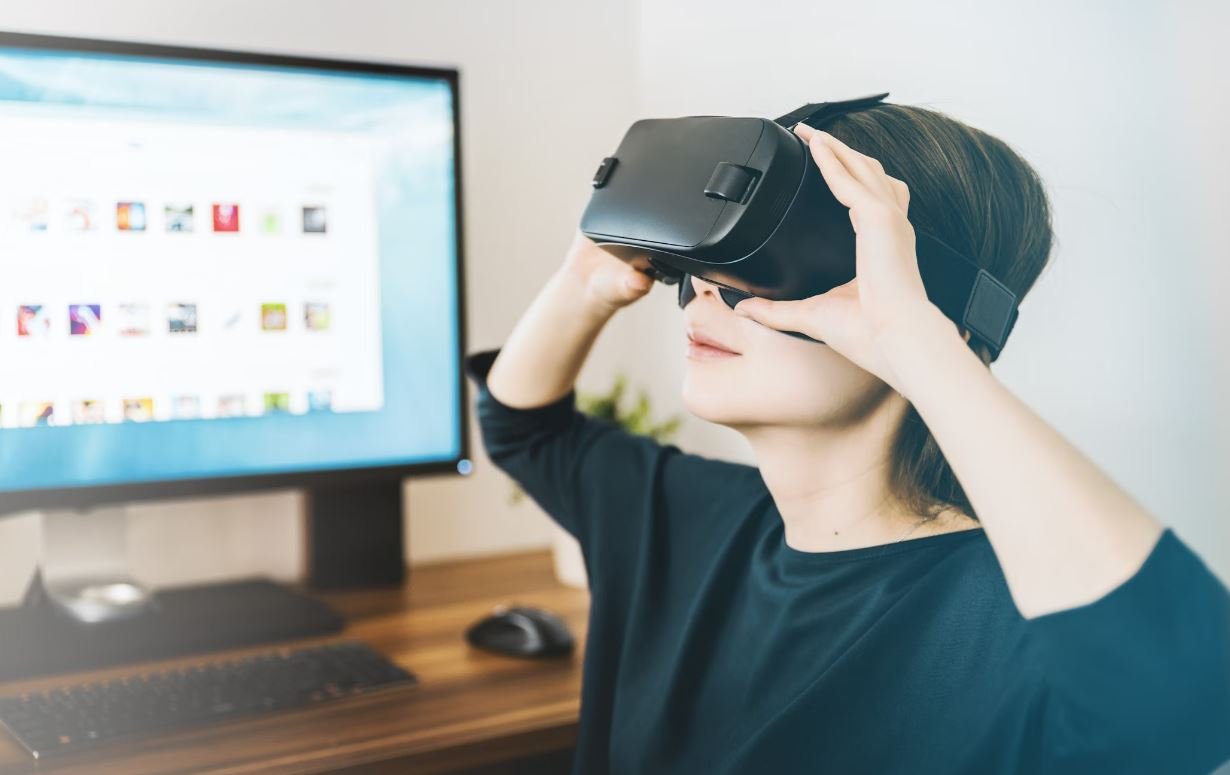Video Wall Controller
A video wall controller is a powerful tool used to manage and display content across multiple screens, creating an impactful visual experience.
Key Takeaways
- Video wall controllers enhance visual display experiences.
- They allow the management and control of multiple screens.
- Content can be synchronized and distributed seamlessly.
- Video wall controllers offer flexibility and scalability.
Overview
A video wall controller is a hardware device or software application that enables the display of video, images, and other multimedia content across multiple screens simultaneously. It acts as a central hub, allowing users to manage and control various sources of content. These controllers are commonly used in control rooms, command centers, retail spaces, event venues, and other environments that require large-scale visual displays.
*Video wall controllers revolutionize the way we perceive visual content, creating stunning and immersive displays that capture attention.
Functionality
Video wall controllers offer a range of useful features to enhance the management and control of multiple screens. Some of the key functionalities include:
- Content Distribution: The ability to distribute content to individual screens or sync it across the entire video wall.
- Screen Layout Management: Customization of screen layouts, allowing users to divide the wall into multiple display zones.
- Source Control: Easy switching between various sources of content, such as PCs, media players, and live video feeds.
- Real-Time Monitoring: Monitoring the status and performance of each screen in real-time.
*With a video wall controller, users have complete control over the content they display, ensuring a seamless and dynamic visual experience.
Types of Video Wall Controllers
There are two main types of video wall controllers: hardware-based and software-based.
| Type | Description |
|---|---|
| Hardware-based | Physical devices that are purpose-built for video wall management. |
| Software-based | Applications that run on standard PCs or servers, utilizing software algorithms to manage video walls. |
*Both types provide similar functionalities but differ in terms of flexibility, cost, and scalability.
Benefits of Video Wall Controllers
Implementing a video wall controller offers several advantages:
- Increased Impact: Video walls grab attention and leave a lasting impression.
- Enhanced Collaboration: Ideal for collaboration in control rooms and command centers, allowing teams to work together more effectively.
- Improved Decision-Making: Real-time data display and the ability to monitor multiple sources at once facilitate better decision-making.
*The innovative technology behind video wall controllers provides organizations with measurable benefits.
| Video Wall Controllers | Hardware-based | Software-based |
|---|---|---|
| Flexibility | May have limitations on customization. | Highly flexible with customizable features. |
| Scalability | May require additional hardware for expansion. | Easily scalable with software upgrades. |
Considerations
When selecting a video wall controller, take the following factors into consideration:
- Compatibility with existing hardware and software systems.
- Required processing and graphics capabilities.
- Number and type of input/output connections.
- Budget and long-term maintenance costs.
*Choosing the right video wall controller ensures optimal performance and longevity.
| Video Wall Controller | Important Features |
|---|---|
| Hardware-based | Specialized hardware for optimized performance. |
| Software-based | Flexibility and scalability through software upgrades. |
Conclusion
Video wall controllers provide a powerful solution for managing and displaying content across multiple screens. Whether you require a hardware-based or software-based controller, the benefits of video walls are undeniable. From enhancing visual experiences to improving collaboration and decision-making, video wall controllers are an essential tool in any environment that demands impactful visual displays.

Common Misconceptions
Misconception 1: Video wall controllers are expensive
One of the common misconceptions people have about video wall controllers is that they are expensive. However, this is not always the case. While some high-end video wall controllers can have a hefty price tag, there are also affordable options available in the market. It is important to do research and compare different models to find one that fits your budget.
- Video wall controllers come in a range of prices to suit different budgets
- Consider the specific requirements of your video wall setup to determine the appropriate price range
- Explore different brands and models to find affordable options without compromising on quality
Misconception 2: Video wall controllers are difficult to set up and operate
Another misconception people have is that video wall controllers are complicated to set up and operate. While some advanced video wall controllers may require technical expertise, many models are user-friendly and come with intuitive interfaces. Additionally, there are comprehensive user manuals and online resources available to assist users in the setup and operation process.
- Look for video wall controllers with user-friendly interfaces and intuitive controls
- Take advantage of online resources such as tutorials and user forums for assistance
- Consider seeking professional installation services if you are unsure about the setup process
Misconception 3: Video wall controllers are only beneficial for large-scale displays
Some people mistakenly believe that video wall controllers are only useful for large-scale display setups. However, video wall controllers can be beneficial for any size of display, ranging from small to large. They offer the flexibility to customize and manage the content across multiple screens, regardless of the size of the installation.
- Consider video wall controllers even for small display setups to enhance visual impact
- Take advantage of the content management capabilities of video wall controllers, regardless of the display size
- Explore the various functionalities of video wall controllers to find how they can benefit your specific setup
Misconception 4: Video wall controllers require extensive hardware and infrastructure
Another misconception is that setting up video wall controllers requires extensive hardware and infrastructure. While video wall controllers may require specific hardware components such as video splitters or processors, they do not necessarily require complex infrastructure. In fact, many video wall controllers can be connected using standard network cables and do not require any additional infrastructure.
- Research video wall controllers that can work with your existing hardware infrastructure
- Consult with professionals to determine the specific hardware requirements for your video wall controller setup
- Consider options that utilize standard network cables to simplify the setup process
Misconception 5: Video wall controllers are only used for advertising
Some people wrongly assume that video wall controllers are only used for advertising purposes. While video walls are commonly used in advertising and marketing, video wall controllers have a wide range of applications beyond that. They can be used in command centers, control rooms, retail displays, educational institutions, and various other industries.
- Explore different industries and sectors to find unique applications for video wall controllers
- Consider the specific needs of your business or organization to determine how video wall controllers can be beneficial
- Research case studies and testimonials from different industries to understand the various applications of video wall controllers

Video Wall Controller Costs
Below is a breakdown of the costs associated with different types of video wall controllers:
| Type of Video Wall Controller | Average Cost (USD) |
|---|---|
| Basic Video Wall Processor | $500 |
| Mid-Range Video Wall Controller | $1,200 |
| Professional Video Wall Processor | $3,500 |
| Advanced Video Wall Controller | $7,000 |
Video Wall Resolution Comparison
Explore the differences in video wall resolutions:
| Resolution Type | Pixel Density | Aspect Ratio |
|---|---|---|
| Full HD (1080p) | 2,073,600 pixels | 16:9 |
| 4K Ultra HD | 8,294,400 pixels | 16:9 |
| 8K Ultra HD | 33,177,600 pixels | 16:9 |
Video Wall Display Technologies
Learn about different display technologies used in video walls:
| Display Technology | Advantages | Disadvantages |
|---|---|---|
| LED | High brightness, wide viewing angles | Higher cost |
| LCD | Lower cost, energy-efficient | Restricted viewing angles |
Video Wall Control Options
Explore different control options for video walls:
| Control Option | Description |
|---|---|
| Manual Control | Adjust video wall settings manually |
| Remote Control | Control the video wall settings remotely |
| Network Control | Manage video wall settings through a network |
Video Wall Content Types
Explore different content types suitable for video walls:
| Content Type | Description |
|---|---|
| Images | Display static images on the video wall |
| Videos | Play videos on the video wall |
| Live Feeds | Stream live content on the video wall |
Video Wall Installation Process
Learn about the steps involved in installing a video wall:
| Installation Step | Description |
|---|---|
| Planning | Assessing the location and space requirements |
| Mounting | Mounting the displays securely |
| Wiring | Connecting the displays and controllers |
| Testing | Verifying the functionality of the video wall |
Video Wall Applications
Discover various applications of video walls in different industries:
| Industry | Application |
|---|---|
| Retail | Advertising and promotional displays |
| Command and Control | Surveillance and monitoring systems |
| Education | Interactive learning environments |
Video Wall Maintenance
Explore the maintenance requirements for video walls:
| Maintenance Task | Frequency |
|---|---|
| Cleaning | Every 3 months |
| Software Updates | As needed, at least twice a year |
| Component Inspections | Annually |
Video Wall Benefits
Discover the advantages of using a video wall:
| Benefit | Description |
|---|---|
| Enhanced Visual Impact | Captivate viewers with large, immersive displays |
| Flexibility | Display diverse content and adjust configurations easily |
| Centralized Control | Manage multiple displays from a single control unit |
Video wall controllers, such as those listed in the first table, are essential components for achieving impressive video wall setups. The resolution comparison table highlights the pixel density and aspect ratio differences between popular resolutions. Furthermore, the table on video wall display technologies allows for a better understanding of the advantages and disadvantages thereof. Additionally, the table illustrates various control options, content types, installation steps, applications across different industries, maintenance requirements, and overall benefits of video walls. This comprehensive collection of information aims to provide a complete picture of video wall controllers and related topics.
Frequently Asked Questions
What is a video wall controller?
A video wall controller is a device that enables the display of multiple video sources on a single large screen, called a video wall. It processes and combines the input video signals, and then controls the output to the individual screens within the video wall.
How does a video wall controller work?
A video wall controller takes the video inputs from various sources, such as cameras, computers, or media players, and processes them to create a single composite video signal. This composite signal is then distributed to the individual screens of the video wall, allowing the display of multiple video sources simultaneously.
What are the benefits of using a video wall controller?
Using a video wall controller has several benefits, including:
- Improved visual experience by displaying multiple video sources simultaneously
- Enhanced flexibility to switch between different video sources
- Ability to display large-scale graphics and content
- Centralized control and management of the video wall
What types of video wall controllers are available?
There are different types of video wall controllers available, ranging from hardware-based controllers to software-based controllers. Hardware controllers are standalone devices specifically designed for video wall applications, while software controllers can be installed on a computer or server.
What features should I consider when choosing a video wall controller?
When selecting a video wall controller, consider the following factors:
- Number of video inputs and outputs supported
- Resolution and compatibility with the video wall displays
- Processing power and capability
- Ease of use and user interface
- Scalability for future expansion
Can I use any display for a video wall?
Video wall controllers are typically compatible with a wide range of displays, including LCD panels, LED tiles, and projectors. However, it is important to check the specifications and requirements of both the video wall controller and the displays to ensure compatibility.
Can a video wall controller handle different video resolutions?
Yes, most video wall controllers can handle different video resolutions. They are designed to scale and adjust the input signals to match the resolution of the video wall displays. This allows mixing and displaying of video sources with varying resolutions on the same video wall.
Can I control the video wall remotely?
Yes, many video wall controllers offer remote control capabilities. These controllers can be accessed and managed over a network connection, allowing users to control and configure the video wall from a remote location.
Is it possible to create a video wall with irregular screen configurations?
Yes, video wall controllers support various screen configurations, including irregular layouts. They offer advanced video mapping and calibration features, allowing the adjustment and alignment of content across screens with different sizes, resolutions, and orientations.
Can a video wall controller support real-time content updates?
Yes, many video wall controllers support real-time content updates. These controllers can seamlessly switch between different video sources or display dynamic content, such as live feeds or data visualization, without any noticeable delay or interruption.




